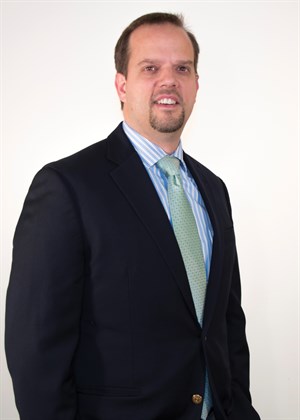Dr. Mark Kimber, assistant professor in the Department of Nuclear Engineering at Texas A&M University, is working to make advanced thermal reactors safer by establishing trusted uncertainty guidelines regarding advanced reactor turbulent mixing processes.
“The overall goal of this project is the efficient management of heat transfer and being able to predict what's going to happen in accident scenarios from a thermal hydraulics standpoint,” Kimber said. “A lot of what I’m doing in this research is focused on establishing uncertainty in the predictive tools that we have for measuring those accident scenarios.”
 Kimber’s group can run a simulation for an accident scenario or a hydraulic mixing phenomena which is able to produce information that may seem accurate, but Kimber and others need to be able to know how well that information can be trusted. Kimber’s current three-year grant focuses on high temperature gas cooled reactors. For these reactors, modeling tools are available to generate predictions, but these predictive tools have not been validated to the extent necessary for next generation reactor conditions and environments.
Kimber’s group can run a simulation for an accident scenario or a hydraulic mixing phenomena which is able to produce information that may seem accurate, but Kimber and others need to be able to know how well that information can be trusted. Kimber’s current three-year grant focuses on high temperature gas cooled reactors. For these reactors, modeling tools are available to generate predictions, but these predictive tools have not been validated to the extent necessary for next generation reactor conditions and environments.
“We essentially want to be able to validate the simulation tools that we have and ensure that they will not only help us predict how the flow will mix but that we can trust those tools,” Kimber said. “Turbulence is a very difficult problem to simulate accurately because there are various tools that we have and most of those require you to make certain assumptions about the flow. Every time you are making an assumption about the flow you are limiting the physics you can simulate.”In this particular project, Kimber is trying to validate the tools used to simulate turbulent mixing within the advanced reactor. The project looks at situations where a reactor would have both hot and cold flows mixing together. At some point down the stream, the flows will equalize and mix together at an intermediate temperature. Before this condition is reached however, temperatures can bounce between hot and cold, which can cause the nearby solid supports to contract and expand in those regions. This has the potential to cause structural and other issues in the reactor. The goal is to have the fluids mix together completely in an area of the reactor called the lower plenum so that the temperature fluctuations in the flows are below an accepted value before reaching the gas turbine for power conversion.
Kimber then assesses the uncertainty by making assumptions in his model and comparing it against an experimental data set of the same configuration and flow. According to Kimber, turbulence is especially difficult because exploring the full physics requires extensive computational resources. One of the challenges the researchers are addressing is the relationship between the desired level of uncertainty and the computational complexity of the model. According to Kimber, his background in mechanical engineering has benefited his work in uncertainty qualification while he worked at an electronics cooling laboratory as a part of his doctoral research at Purdue University.
“My research, very simply put, was to take a new and innovative cooling technology that was not yet tried and tested and come up with predicative tools to help us understand the maximum cooling we could achieve,” Kimber said. “These skills directly translated into thermal hydraulics because in thermal hydraulics we are worried about taking the heat in the core and moving it in an effective and safe manner to eventually generate electricity.”
Kimber’s work drives investigation into the world of advanced reactors, an area that 10 years ago had much interest but has had its international support weakened in the wake of such events as the Fukashima disaster. However, the U.S. Department of Energy (DOE) and foreign agencies that play a similar role still see advanced reactors as a potential solution to growing worldwide energy needs. According to Kimber, despite whether a bill is passed to build high temperature reactors in the near future or even years from now, this research needs to take place to be ready for if and when advanced reactors take the next step.
“The end goal of my contribution to this field is not to simply characterize performance issues, but as a result of trusted simulations, be able to design around these problems and build things better,” he said